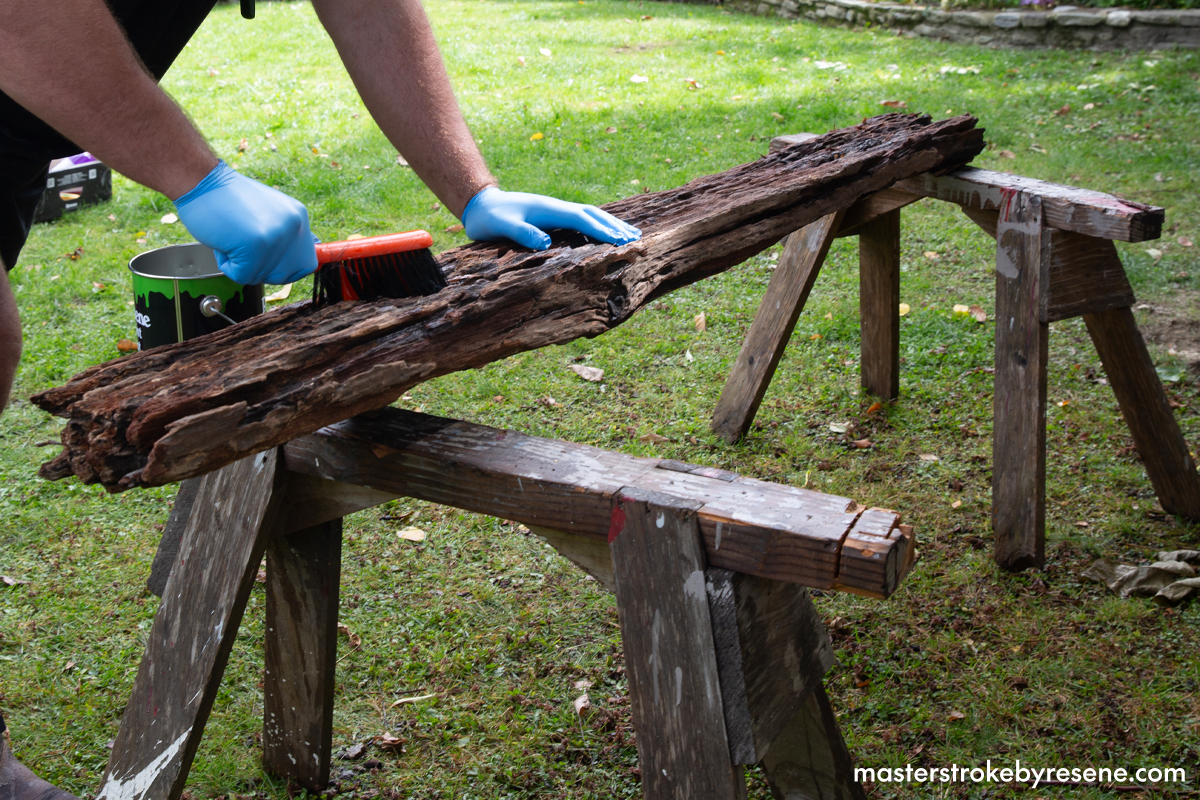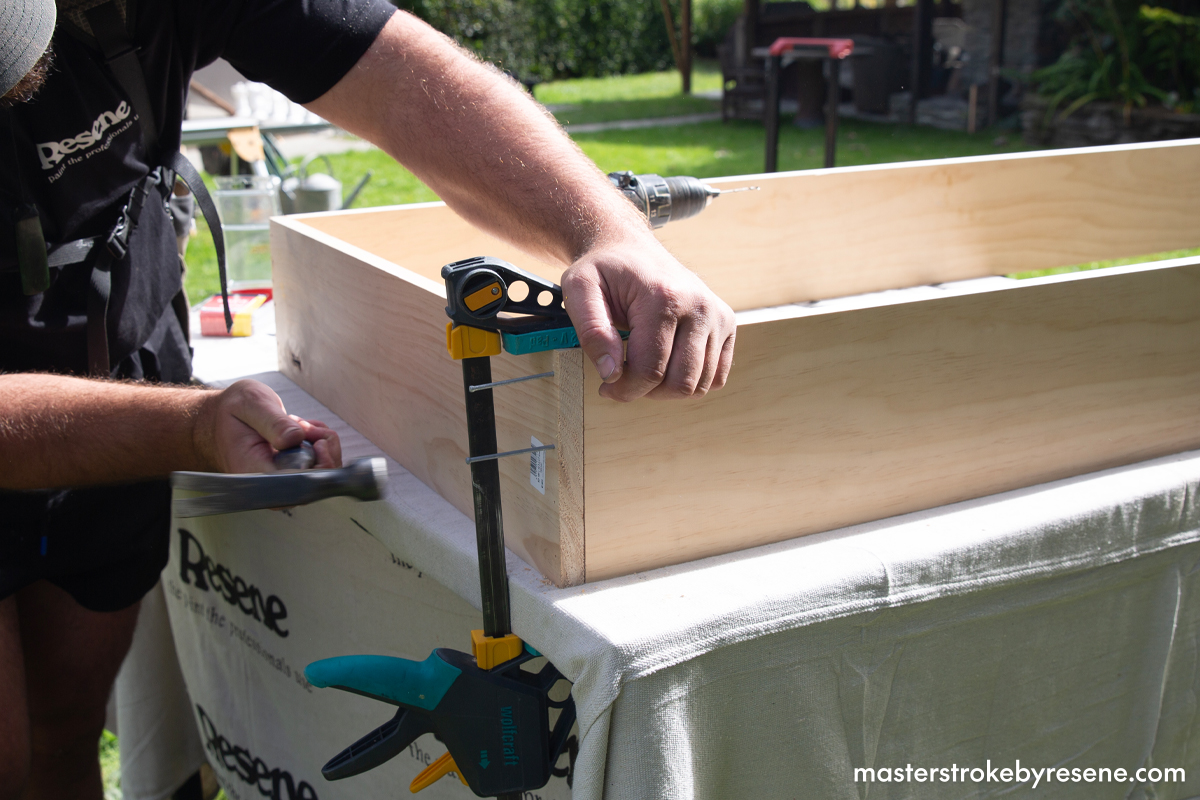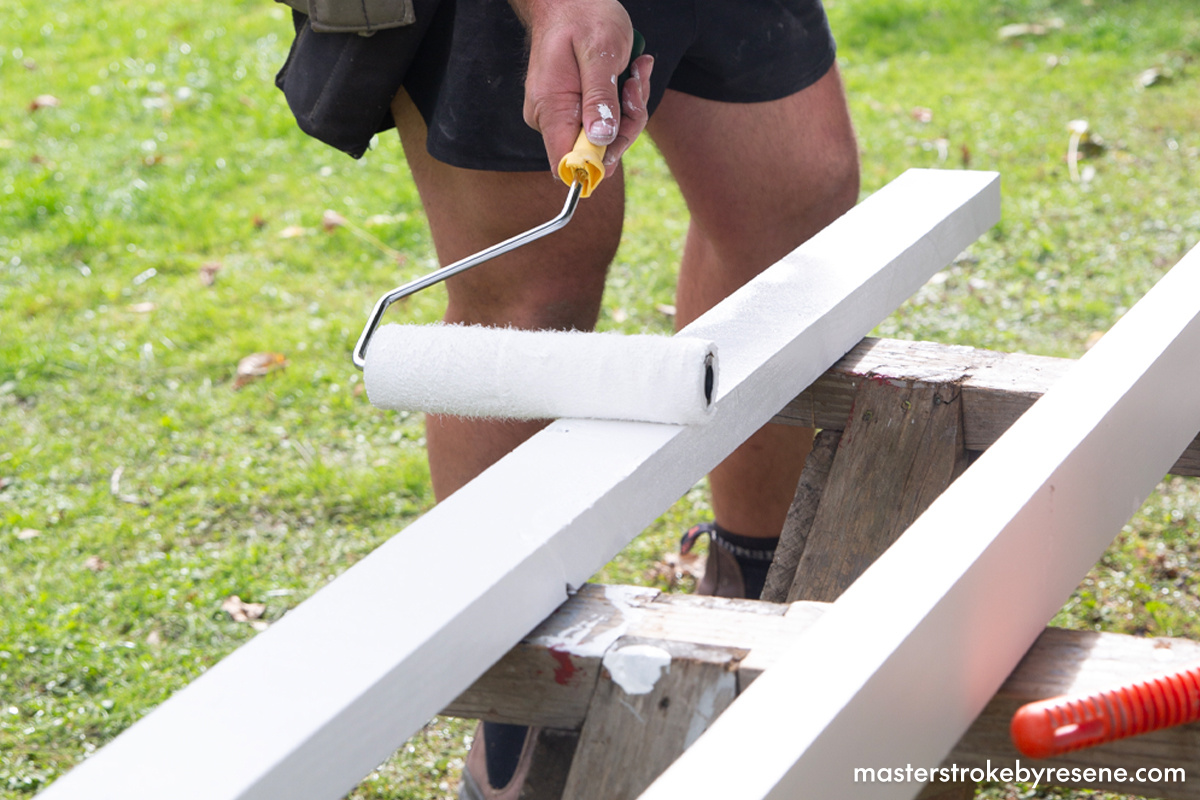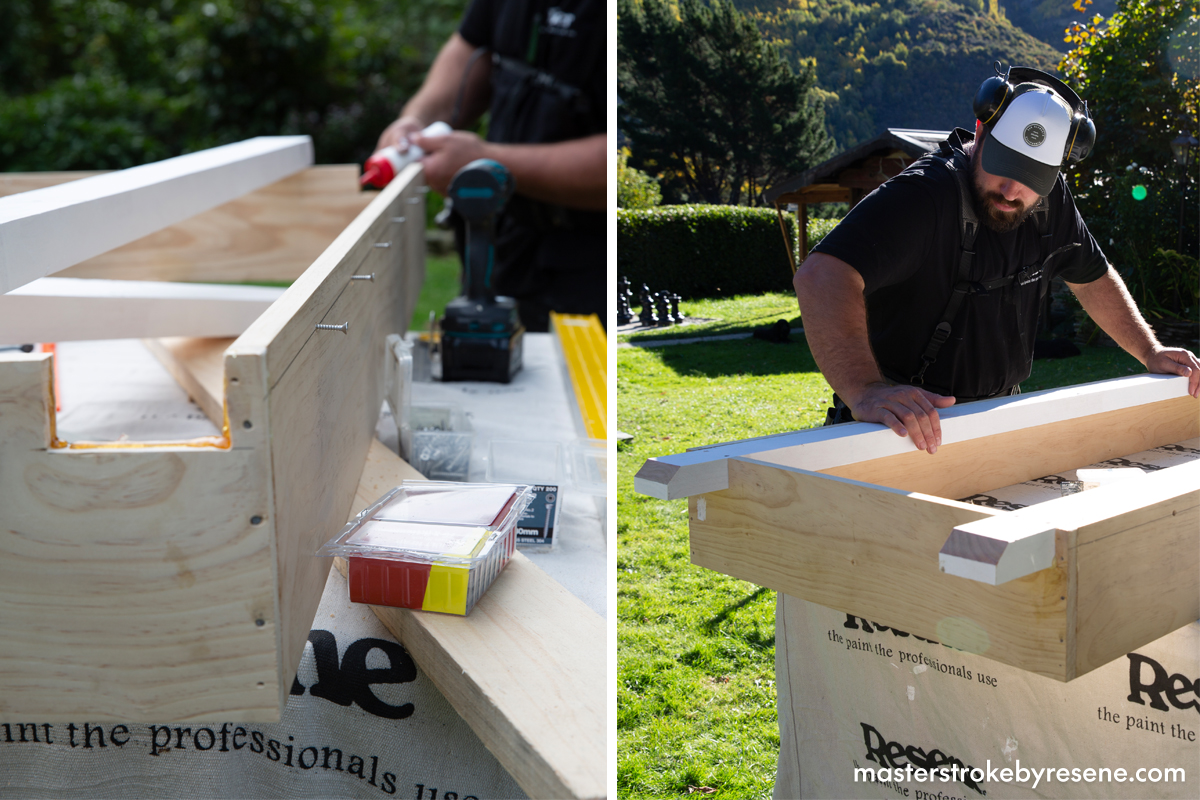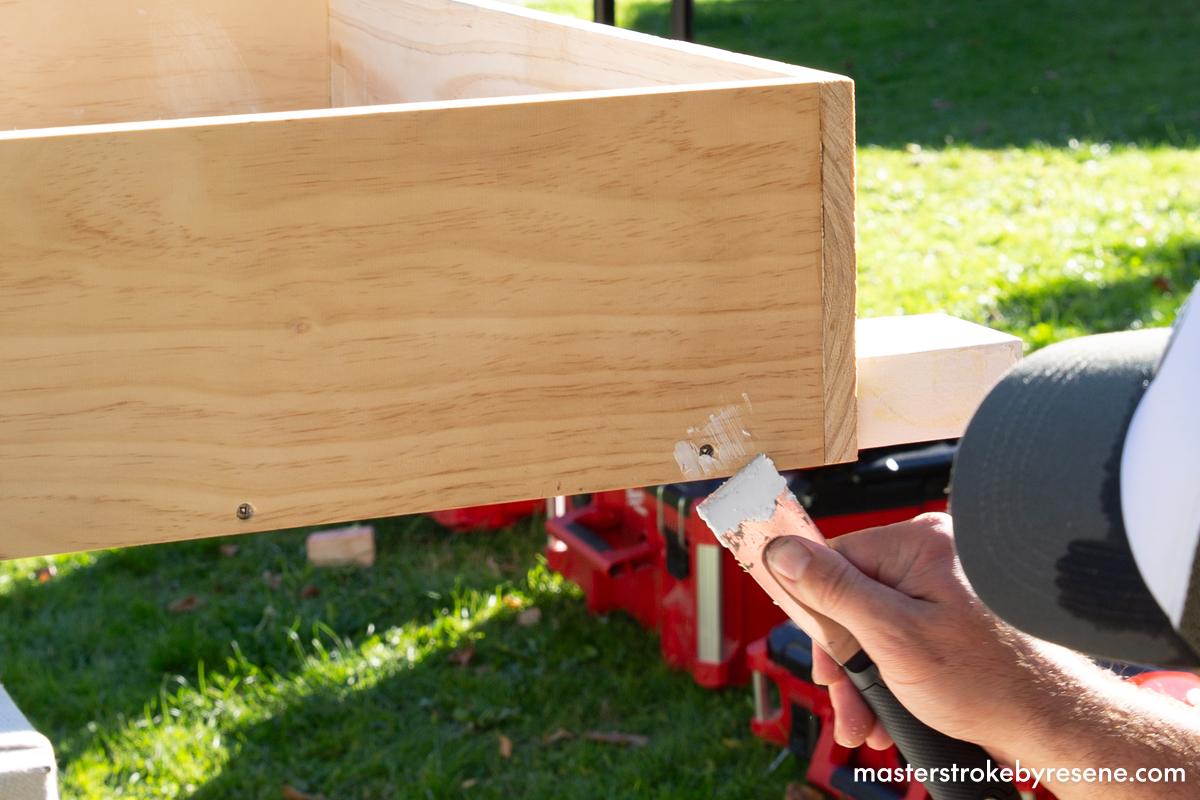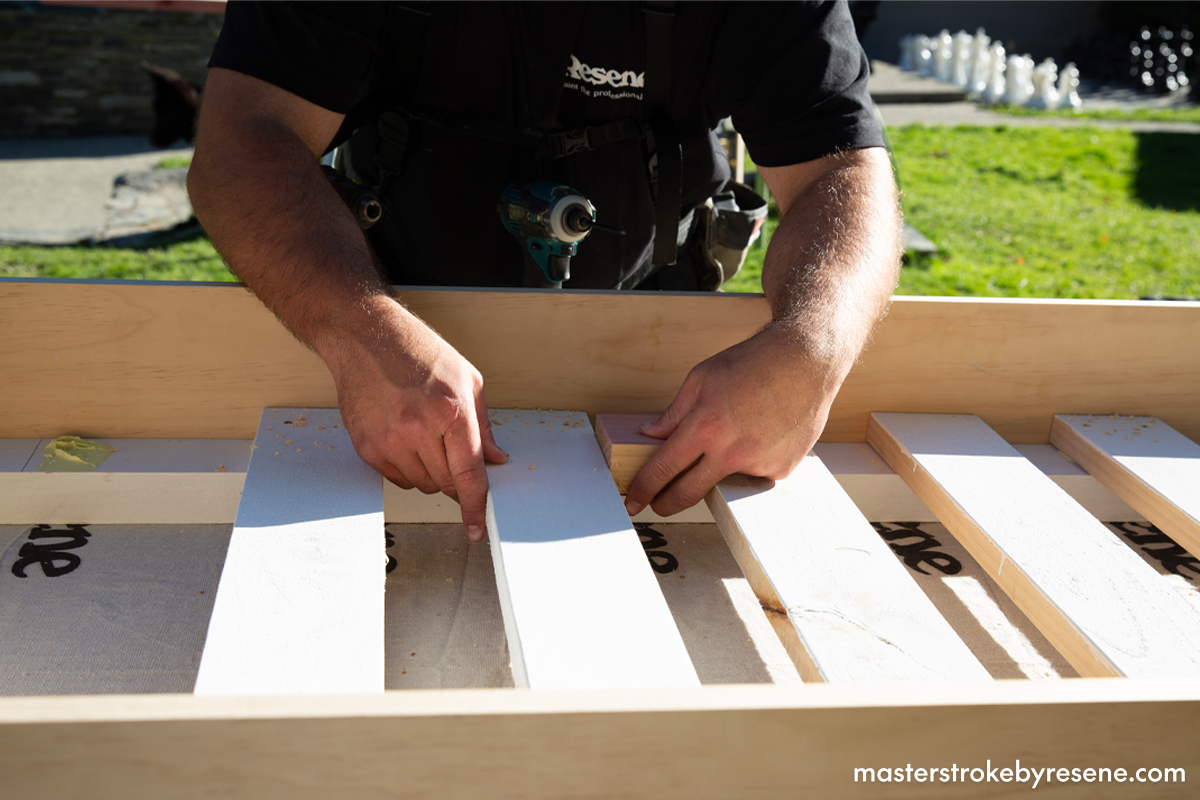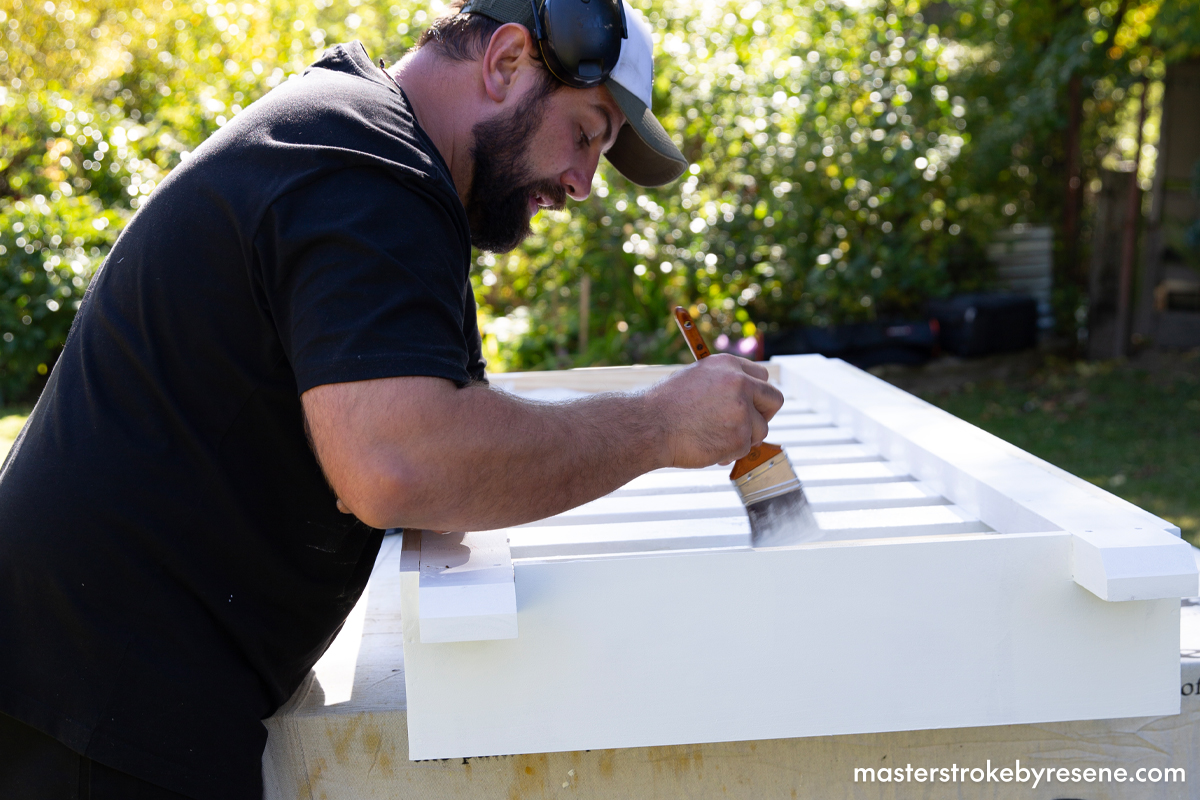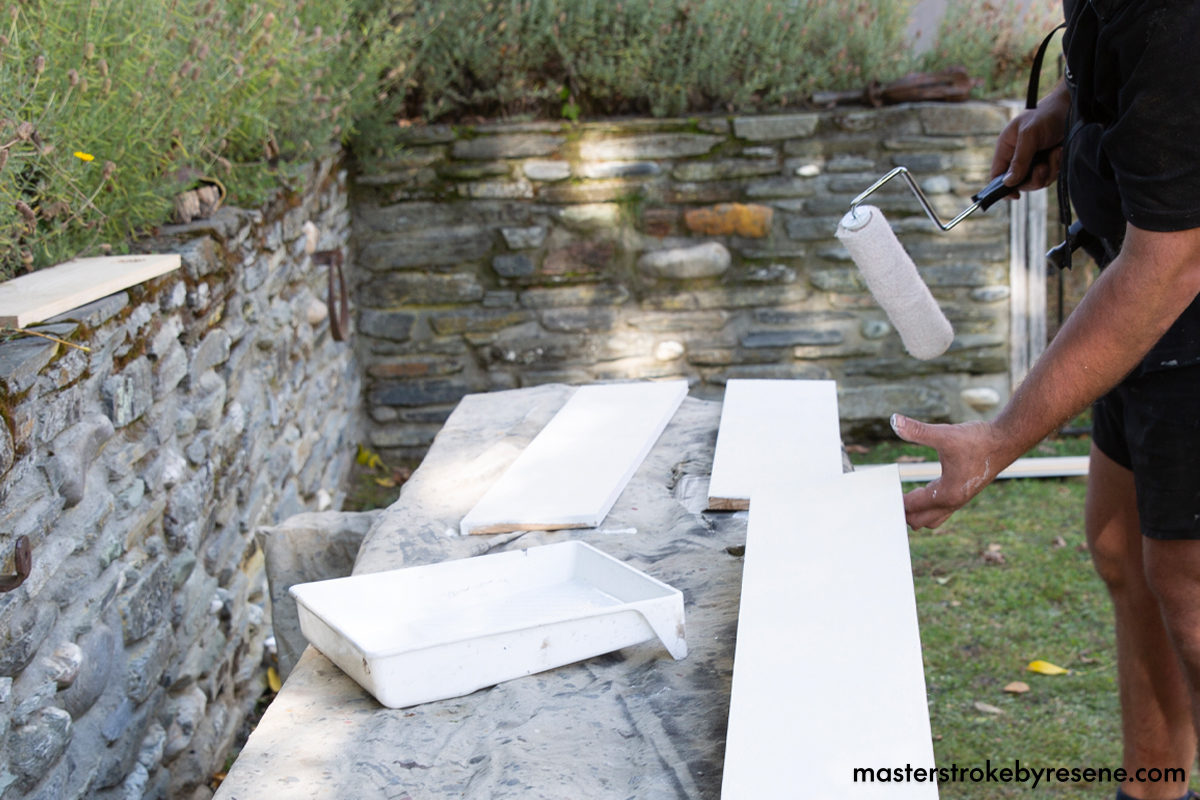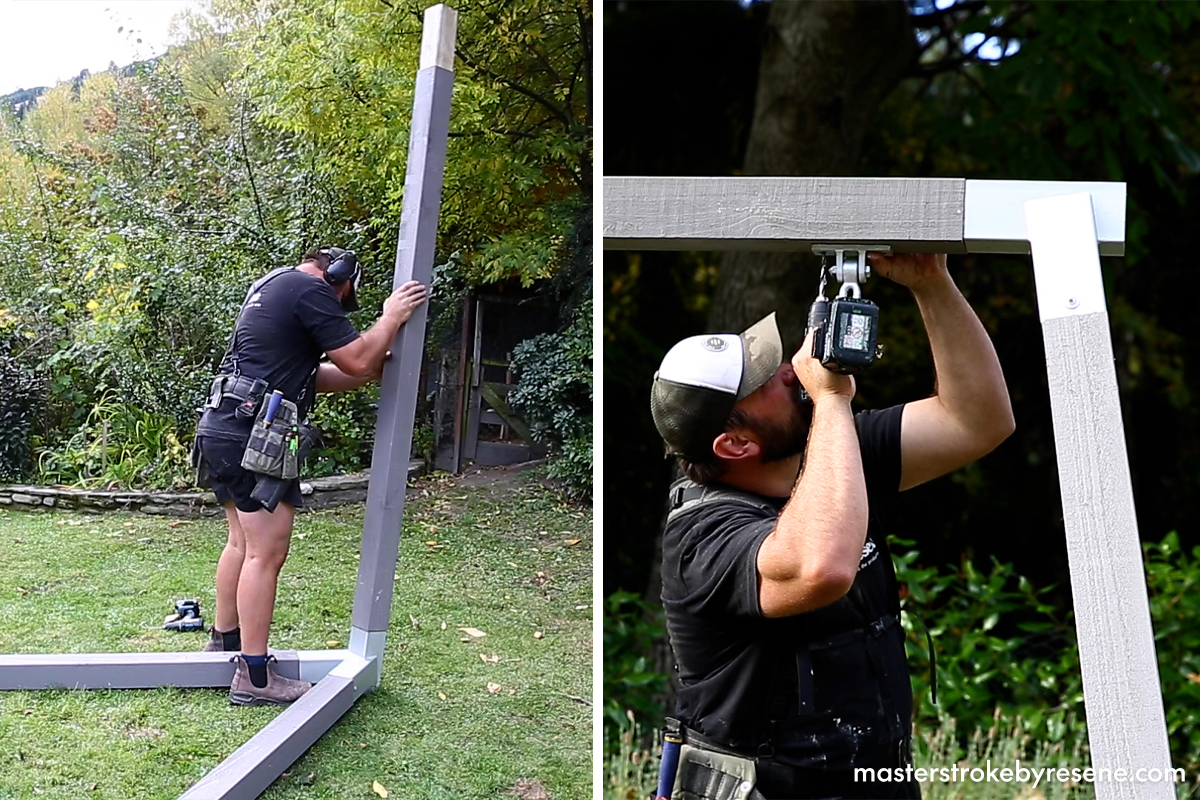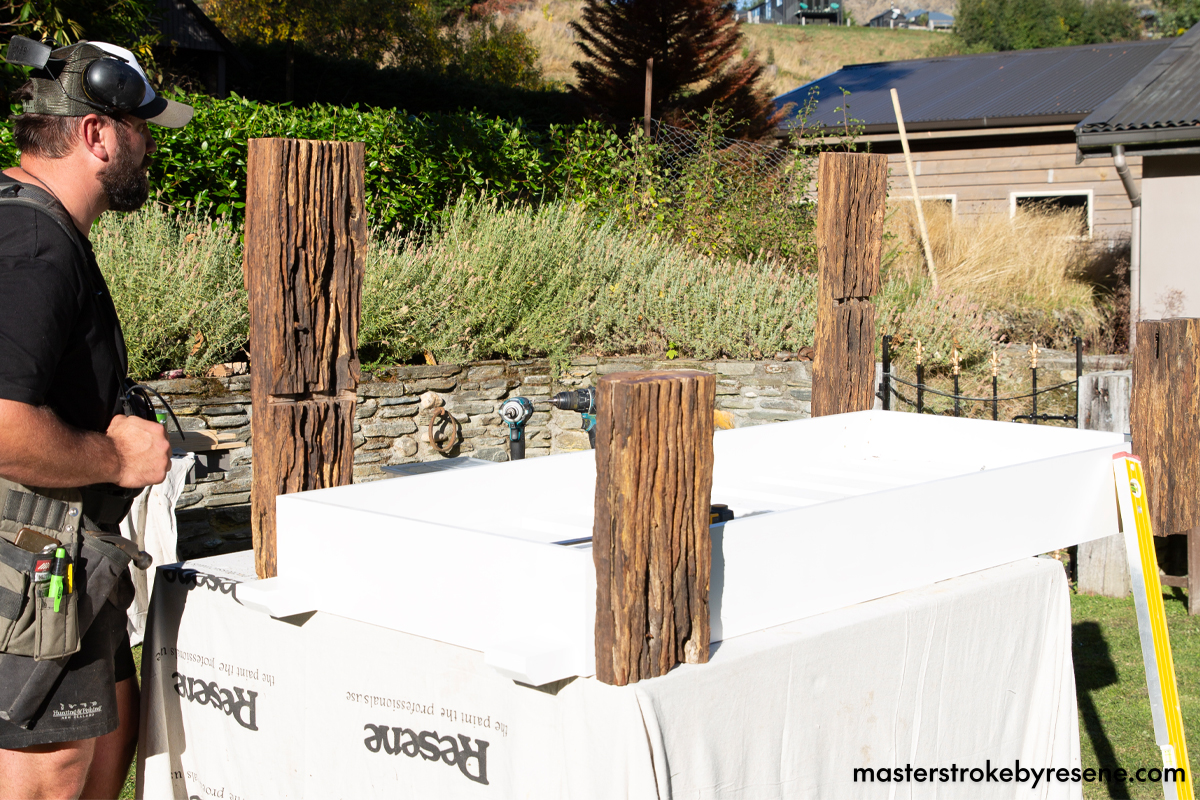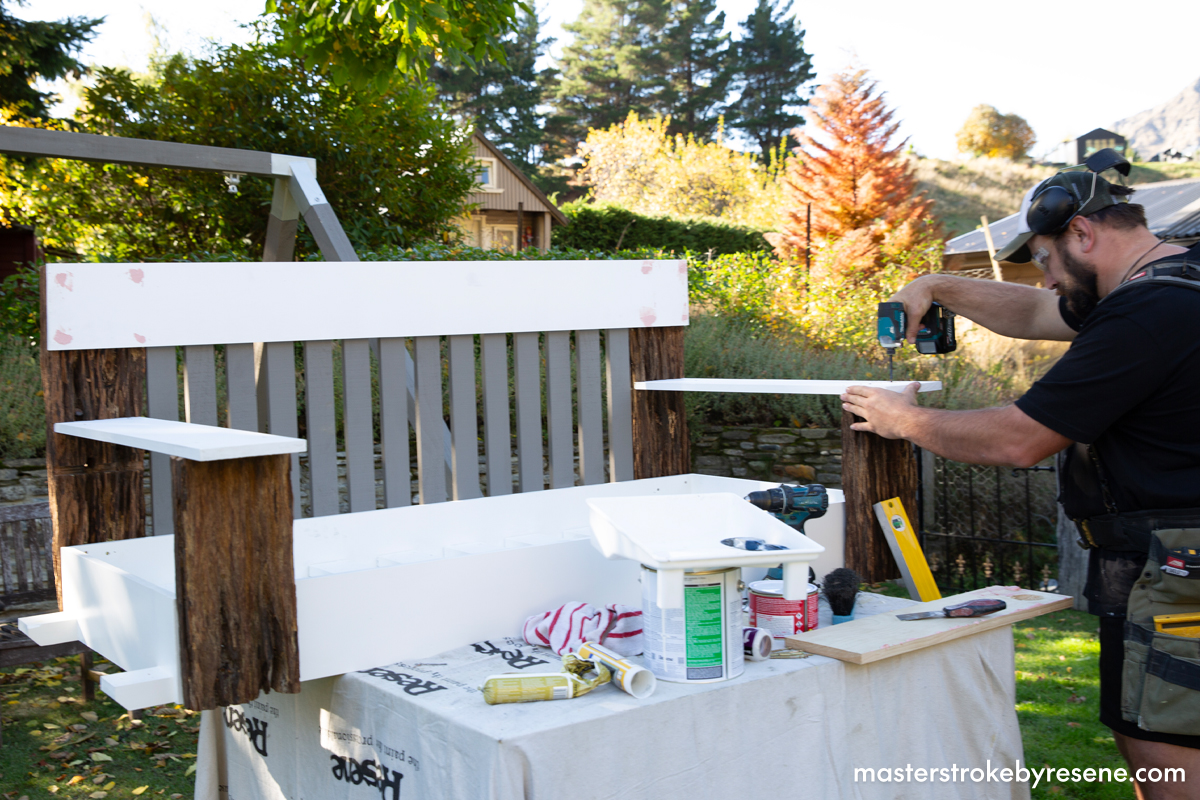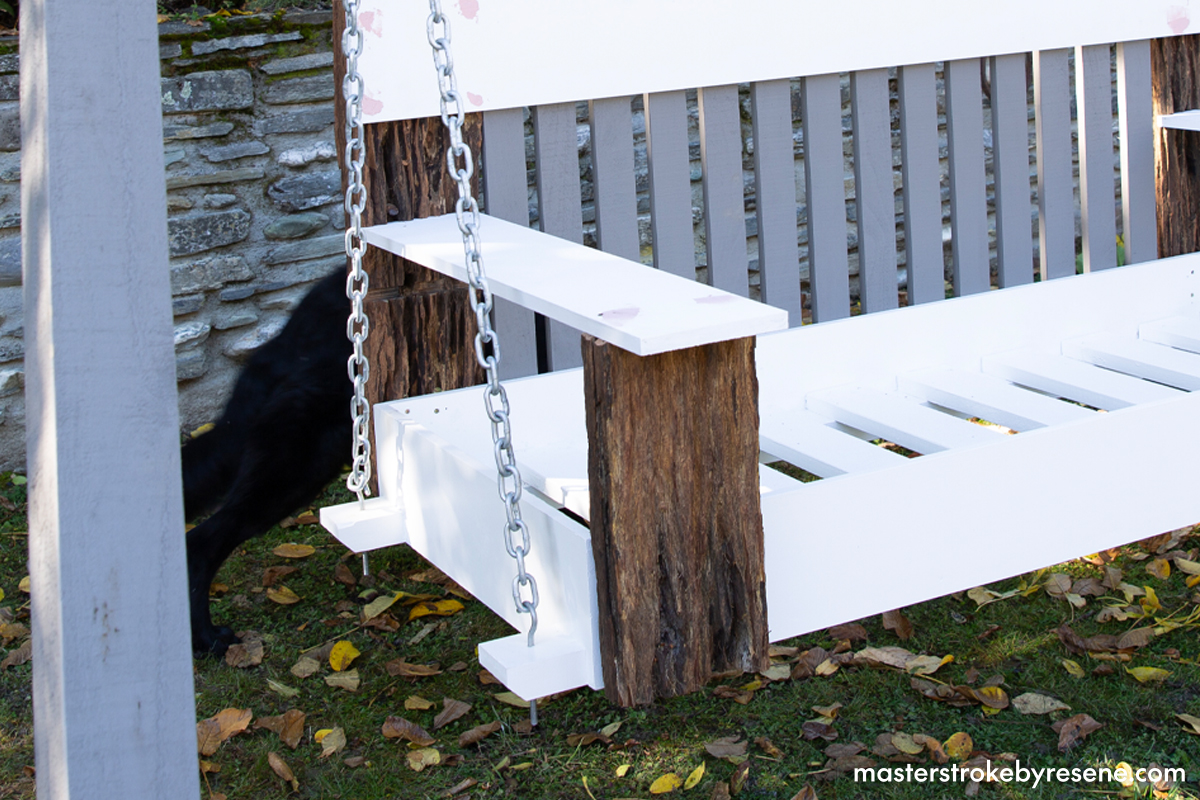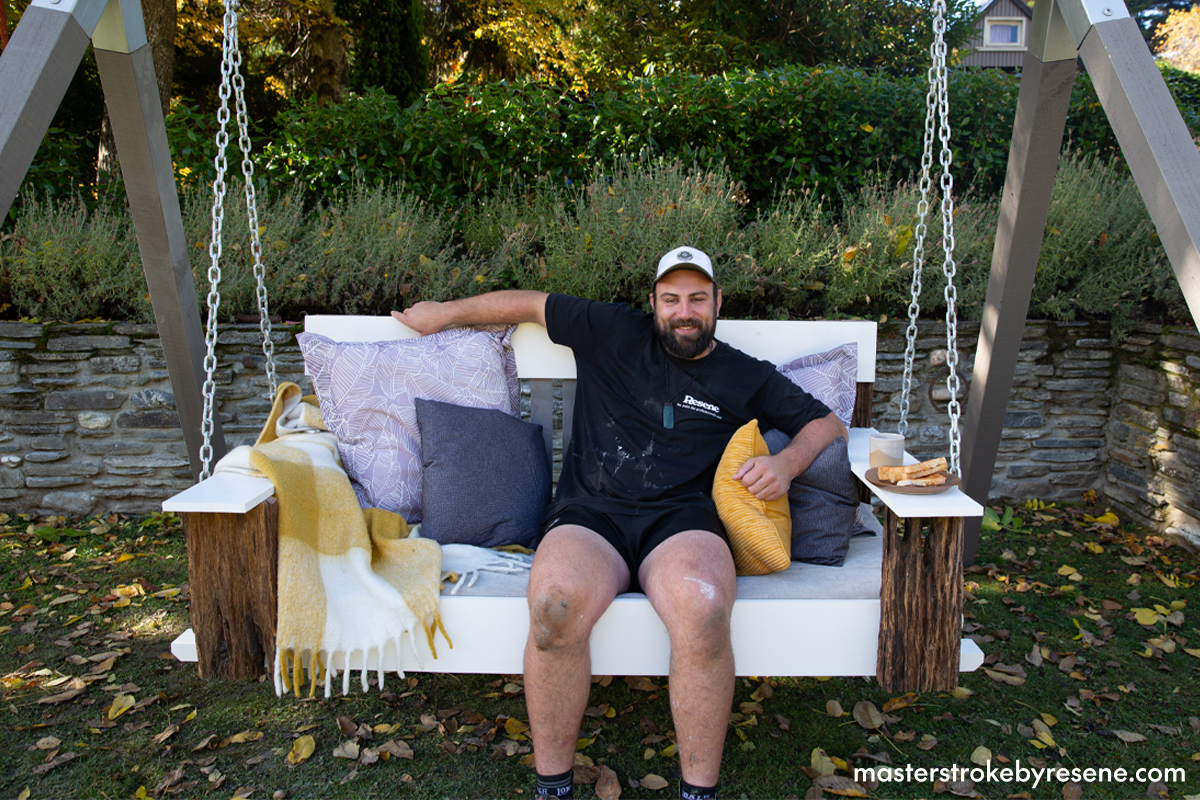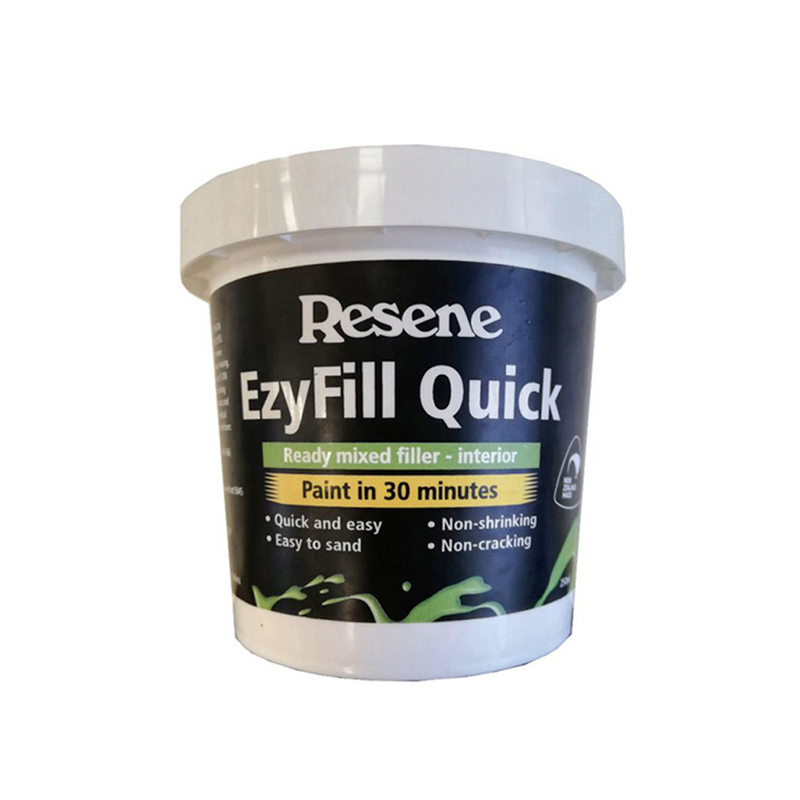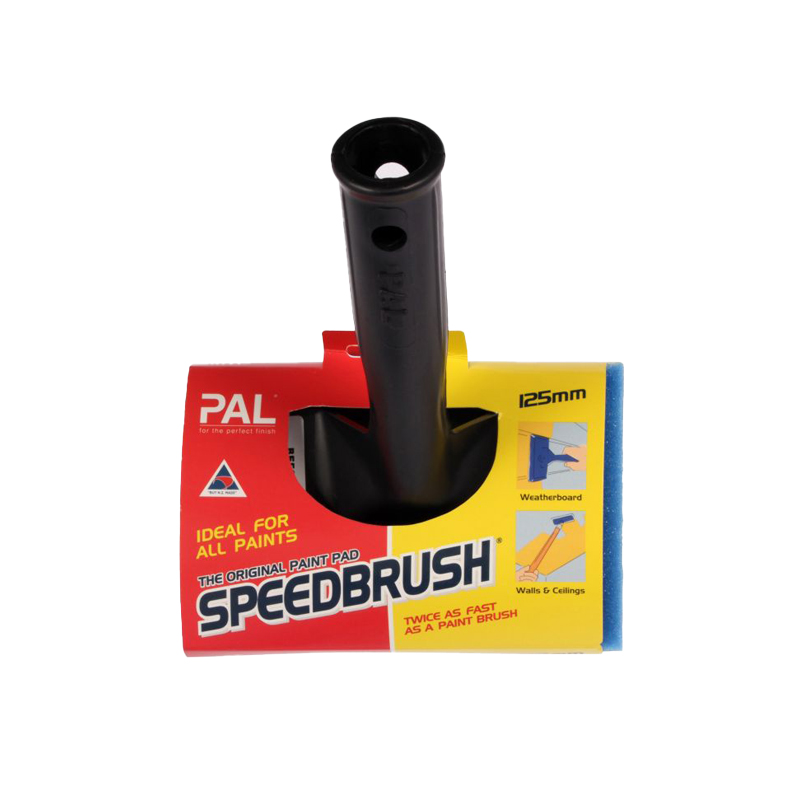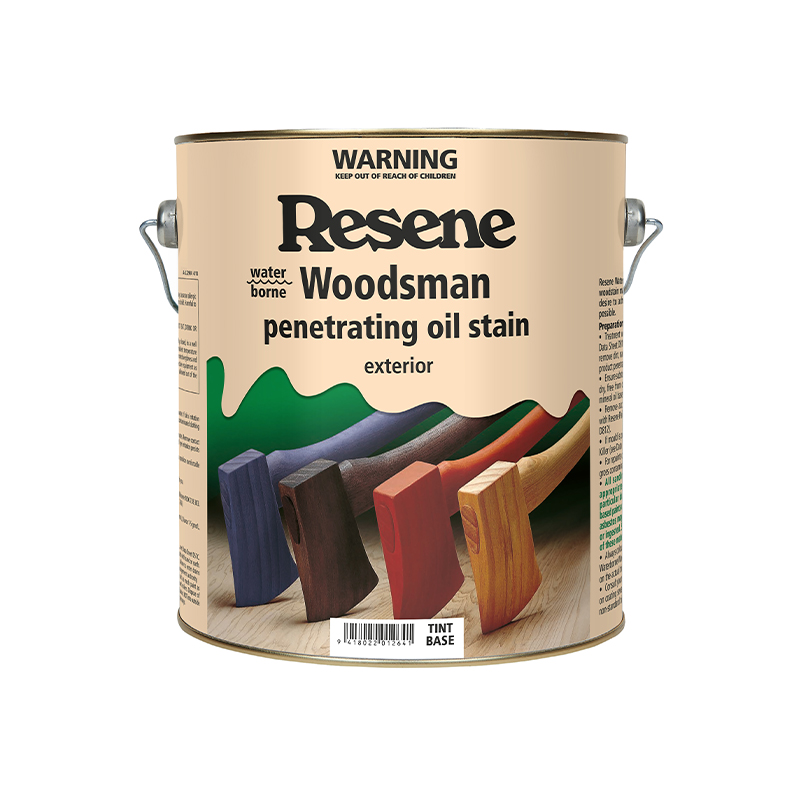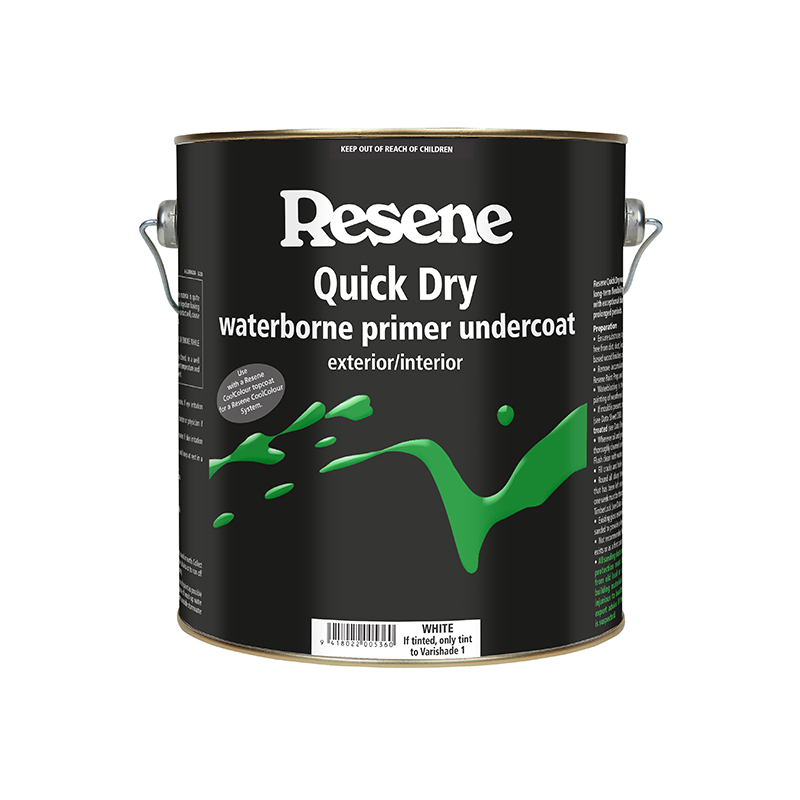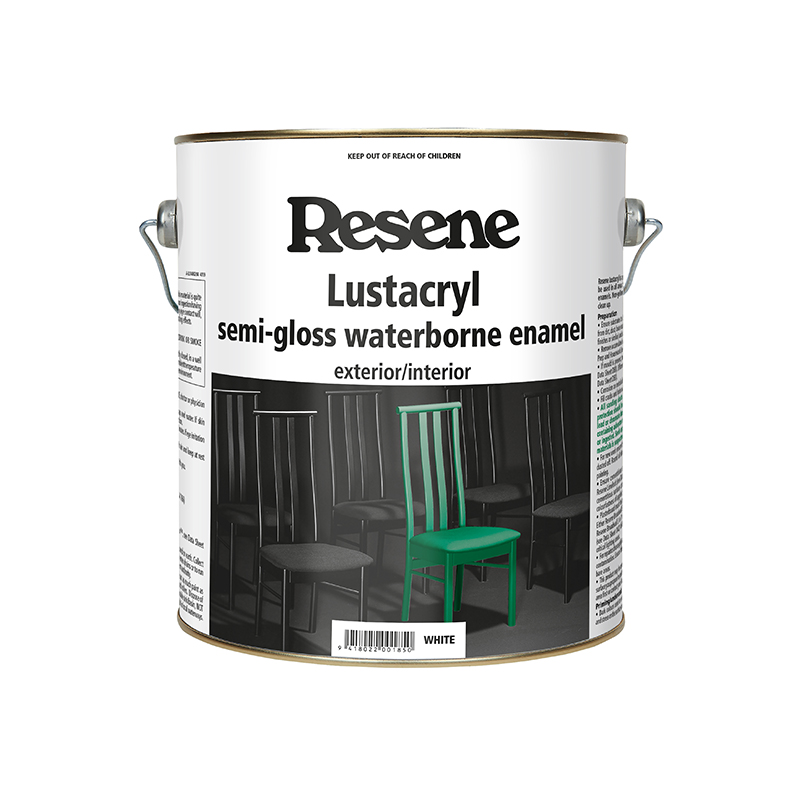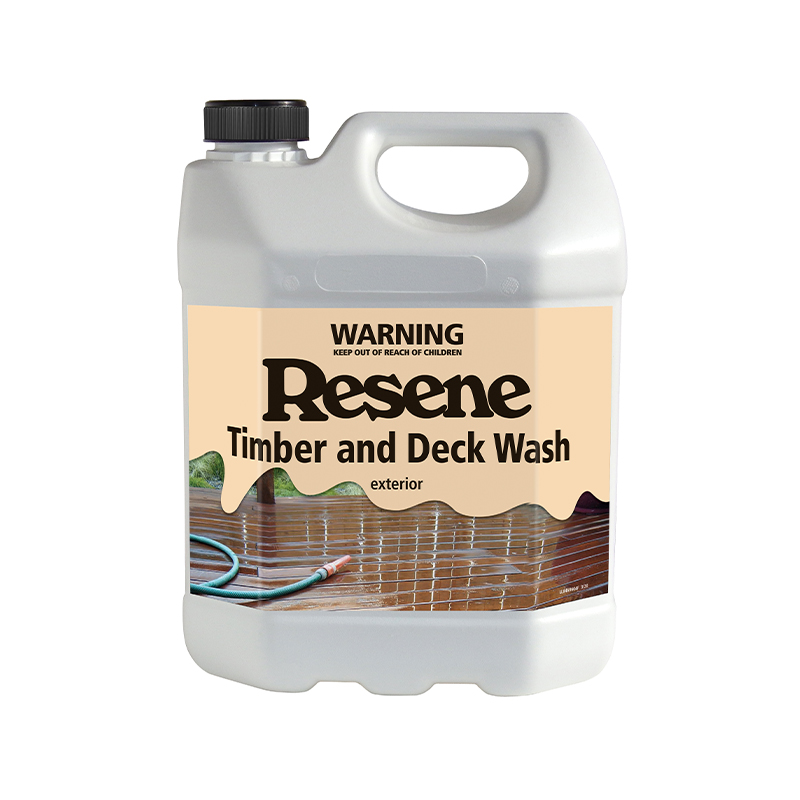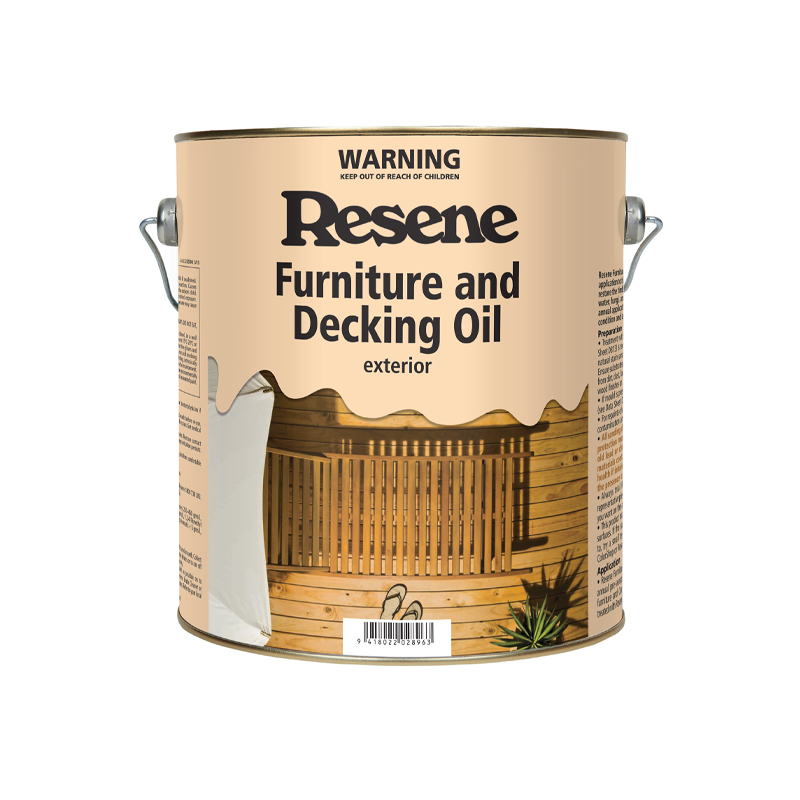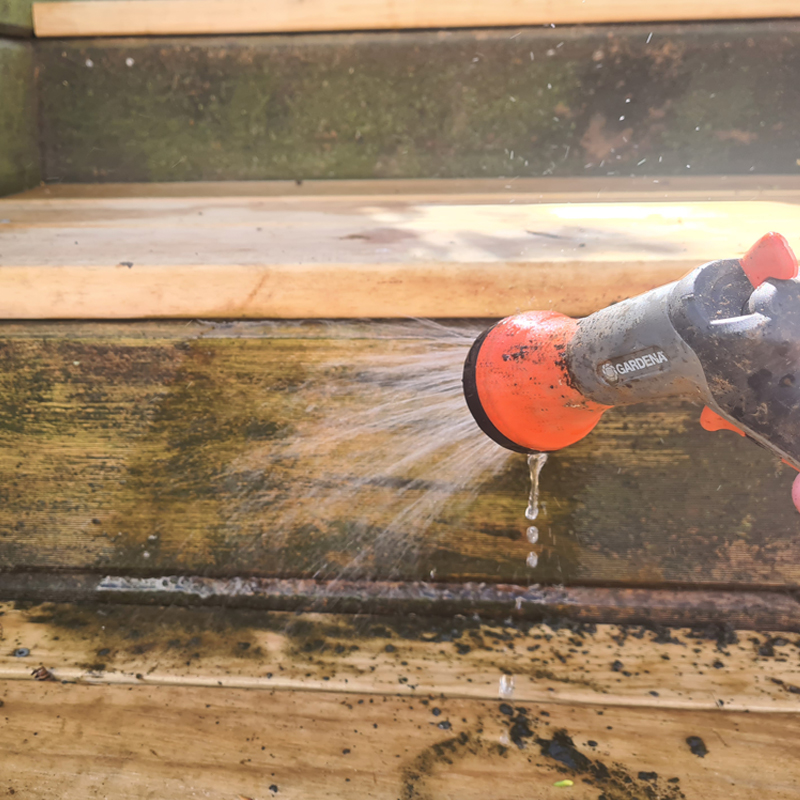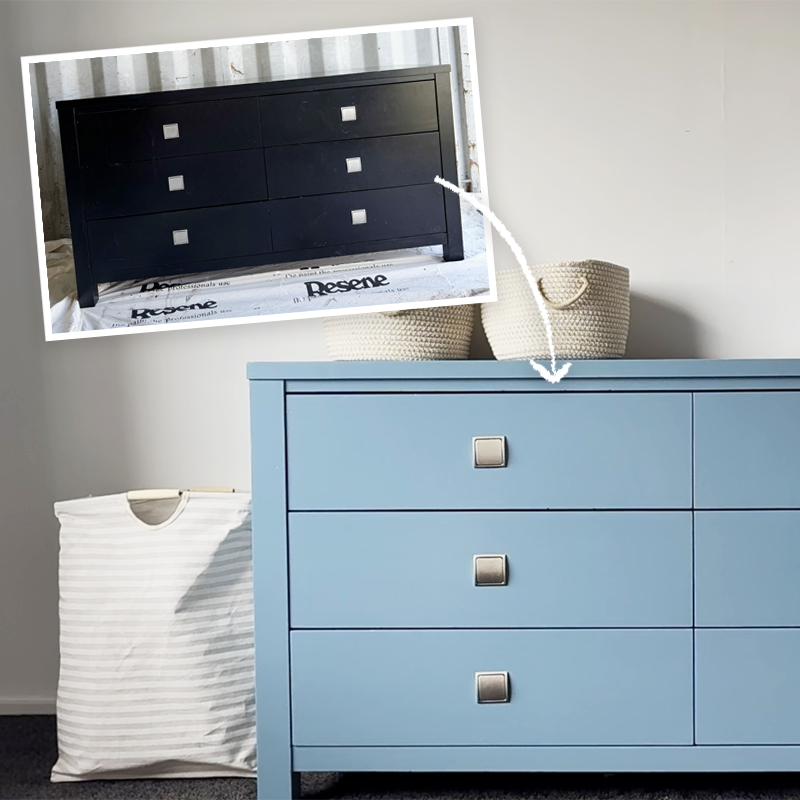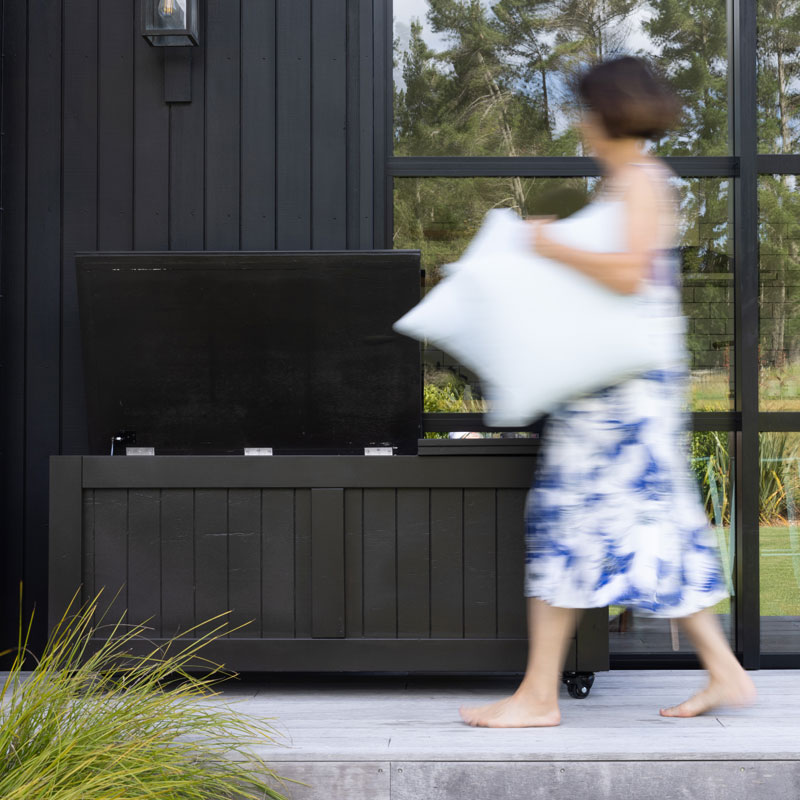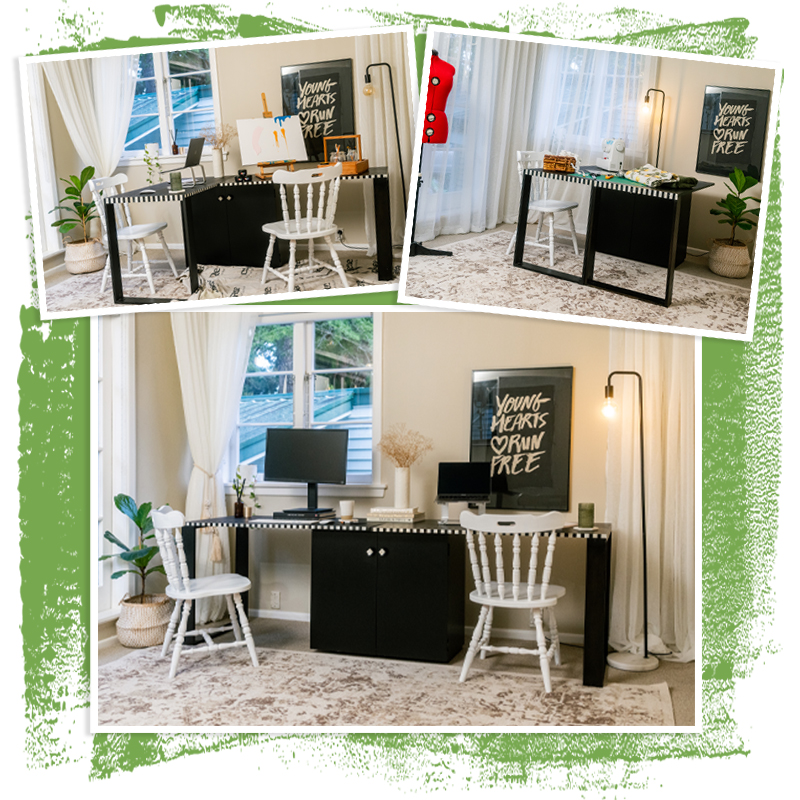Incorporating a swing chair is an impressive way to elevate your outdoor entertainment area. It will not only enhance the overall look and feel of the garden but will also provide a comfortable spot to relax and reset outside. Incorporate railway sleepers for a charming rustic look, wide arm rests so there’s room to place a coffee, lunch or a cold beer, plus enough space for two adults to sit comfortably.
In this Odd Jobs video, Queenstown-based builder Josh Lysaght shares the step-by-step process on how to create your own bespoke swing chair.
This is a statement outdoor furniture piece, with the practical, love seat-style chair suspended by chains from a sturdy A-frame. The use of railway sleepers takes it to the next level – these can be easily sourced from local demolition yard or Trade Me.
Swing chairs are a timeless addition to any backyard, and although you can paint yours any colour you like, Josh has used Resene Half Cararra for a soft, classic look. With this neutral base, you can change up the look seasonally and personalise it further by changing the cushions and throws.
This is a satisfying weekend DIY project that you and your family and friends can enjoy for years to come.

